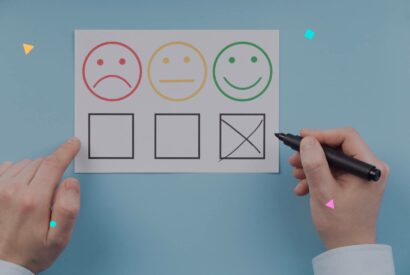Top 10 Customer Loyalty Strategies for Agencies

The statistics are clear: 91% of customers would buy again if they have a good experience with your business. With a 60-70% success rate in selling to existing customers, compared to only 5-20% with new customers, the importance of focusing on loyalty is clear. Businesses that deliver a high quality experience can even reduce the cost of serving customers by 33%. This article gets right to the heart of customer loyalty, offering a comprehensive perspective on how to implement effective strategies that not only increase loyalty but also drive business growth.
Tabla de contenidos
What is customer loyalty?
Customer loyalty is the art of creating and maintaining long-lasting, positive relationships, meeting customers’ needs and exceeding their expectations. It’s not just about delivering exceptional service; it’s a holistic process that directly impacts the growth and success of your brand, turning satisfied customers into active ambassadors for your agency.
Loyalty objectives
The main objectives of loyalty building include generating loyalty, increasing purchase frequency, increasing profitability, and getting referrals. These factors are essential to building a strong and sustainable customer base that promotes the continued growth and stability of your business.
The importance of customer loyalty strategies
Implementing customer loyalty strategies is not simply an option, but a necessity for the long-term growth and sustainability of any agency in the competitive world of marketing. The statistics are compelling: a 5% increase in customer retention can increase profits by 25% to 100%. This underlines the incalculable value of keeping customers satisfied and engaged with your brand.
The importance of these strategies lies in their ability to transform the customer experience, generating not only loyalty but also promoting positive word-of-mouth, which is crucial for attracting new customers in the digital age. In addition, loyal customers tend to spend more and more often, which significantly increases profitability without incurring the high costs associated with new customer acquisition.
By focusing on loyalty, we are not only securing a stable customer base, but we are also investing in brand ambassadors who will amplify our agency’s reach and reputation. Therefore, understanding and implementing effective loyalty strategies is essential for any agency looking to not only survive, but thrive in today’s dynamic marketplace.
Top 10 Effective Customer Loyalty Strategies
- Demonstrate Your Value as an Agency
- Establish your agency as a market leader by sharing your successes and staying updated with trends.
- Share Results and Success Stories: Use case studies and testimonials to showcase the impact of your work.
- Provide Valuable Content: Create blogs, ebooks, and webinars on relevant topics.
- Stay Updated: Attend conferences and participate in training to always offer the most innovative strategies.
- Establish your agency as a market leader by sharing your successes and staying updated with trends.
- Deliver Exceptional Customer Experience
- Exceed your customers’ expectations at every touchpoint to create memorable experiences.
- Effective Communication: Respond promptly to inquiries and personalize communication.
- First-Class Customer Service: Train your team to provide proactive and friendly solutions.
- Deep Understanding of Customer Needs: Dedicate time to understand your customers’ goals and challenges to offer personalized solutions.
- Exceed your customers’ expectations at every touchpoint to create memorable experiences.
- Implement a Loyalty Program
- Foster long-term loyalty and engagement through attractive incentives.
- Loyalty Rewards: Offer discounts and gifts for repeat purchases.
- Points Program: Design a system where customers earn points for their actions and purchases.
- Membership Tiers: Create membership categories with exclusive benefits to incentivize higher levels of spending.
- Foster long-term loyalty and engagement through attractive incentives.
- Build Strong Relationships
- Build lasting connections through personal interaction and recognition.
- Exclusive Events and Activities: Organize meetings and workshops that add value.
- Personalized Communication: Use customer data to personalize each interaction.
- Referral Programs: Incentivize customers to refer your services in exchange for benefits.
- Build lasting connections through personal interaction and recognition.
- Utilize Technology to Enhance Loyalty
- Leverage digital tools to keep your customers engaged and satisfied.
- CRM: Implement CRM software for detailed tracking of customer interactions.
- Marketing Automation: Use automation to send personalized communications at key moments.
- Social Media: Maintain an open dialogue with your customers through social platforms, offering valuable content and support.
- Leverage digital tools to keep your customers engaged and satisfied.
- Know Your Customer Inside Out
- Personalization starts with a deep understanding of your customers.
- Research and Data Analysis: Collect and analyze data to anticipate needs and preferences.
- Service Adaptation: Adjust your offerings based on specific insights from each customer.
- Continuous Feedback: Establish channels to receive and act on customer feedback.
- Personalization starts with a deep understanding of your customers.
- Establish a Continuous Feedback System
- Feedback is key to continuous improvement and customer satisfaction.
- Satisfaction Surveys: Send surveys regularly to assess satisfaction and gather suggestions.
- Open Communication Channels: Provide easy and accessible ways for customers to share their opinions at any time.
- Act on Feedback: Demonstrate to your customers that their feedback has a real impact.
- Feedback is key to continuous improvement and customer satisfaction.
- Develop Loyalty Programs
- Reward repeat business and referrals with loyalty programs that offer real value.
- Contract Renewal Discounts: Offer tangible incentives to renew services.
- Referral Programs: Reward customers for bringing in new business with mutual benefits.
- Access to Exclusive Services: Provide additional services or products as part of the loyalty program.
- Reward repeat business and referrals with loyalty programs that offer real value.
- Offer Value Beyond Contracted Services
- Exceed expectations by offering more than what your customers have paid for.
- Free Webinars and Workshops: Educate your customers on topics of interest at no extra cost.
- Free Market Analysis: Provide reports and analyses to help your customers better understand their industry.
- Personalized Counseling: Offer strategic advice as an added value.
- Exceed expectations by offering more than what your customers have paid for.
- Maintain Constant and Effective Communication
- Smooth and transparent communication is essential for maintaining trust and customer satisfaction.
- Regular Follow-Up Meetings: Schedule regular check-ins to discuss progress and adjust strategies.
- Efficient Communication Tools: Use technology to facilitate quick and clear exchanges.
- Transparency in Communication: Be honest and open in all your communications, setting realistic expectations.
- Smooth and transparent communication is essential for maintaining trust and customer satisfaction.
Success stories: Loyalty strategies to inspire you
Starbucks and its Starbucks Rewards programme.
-
-
- Loyalty strategy: Starbucks developed a programme that rewards customers with points, or “stars”, for each purchase. These stars can be redeemed for free drinks and food, as well as offering exclusive benefits such as early access to new products and special events.
- Result: this strategy has enabled Starbucks to strengthen customer loyalty, encouraging repeat visits and increasing the perceived value of its offerings.
-
Amazon Prime and its exclusive benefits
-
-
- Loyalty strategy: Amazon Prime offers its members a variety of benefits, including free fast shipping, access to streaming movies and series, ad-free music and free e-books.
- Result: These benefits have made Prime members feel valued and part of an exclusive experience, resulting in significantly high renewal rates and an increase in purchase frequency.
-
Sephora and its Beauty Insider Program
-
-
- Loyalty strategy: Sephora offers a loyalty programme that categorises members into three tiers based on their annual spend, each with its own exclusive benefits, such as free products, complimentary makeovers and access to beauty events.
- Result: This programme not only encourages repeat purchases by offering tangible rewards, but also creates an enthusiastic brand community that feels recognised and appreciated.
-
Nike and its Nike Plus app
-
-
- Loyalty strategy: Nike Plus rewards users for their physical activity and purchases with exclusive access to products, special events and personalised workouts
- Result: By integrating product activity with exclusive benefits, Nike has succeeded in creating a loyal community that deeply identifies with the brand and its values.
-
Apple and its integrated ecosystem
-
-
- Loyalty strategy: through an ecosystem of interconnected products and services, Apple offers a seamless user experience that encourages customers to buy more of the brand’s products for complete integration.
- Result: this strategy has established an extremely loyal user base, with a high customer retention rate and strong word-of-mouth recommendation.
-
IKEA and its IKEA Family programme
-
-
- Loyalty strategy: IKEA offers the IKEA Family programme, which provides members with exclusive discounts, special offers, and access to events and workshops.
- Result: By offering added value and creating a sense of belonging, IKEA has succeeded in increasing the frequency of visits and purchases, strengthening customer loyalty.
-
Final conclusions
Implementing effective loyalty strategies has become crucial to the success and sustainability of businesses in today’s highly competitive marketplace. Brands such as Starbucks, Amazon, Sephora, Nike, Apple, Zappos, Tesla, IKEA, Lego and Spotify demonstrate that, regardless of industry, understanding and addressing customer needs and expectations is the key to building lasting and meaningful relationships.
These success stories illustrate how a combination of personalisation, exceptional service, innovative rewards programmes and community building can become powerful loyalty tools. By offering memorable experiences and added value, these companies have not only managed to keep their existing customers satisfied and engaged, but have also encouraged valuable word-of-mouth marketing, attracting new customers.
The conclusion is clear: investing in customer loyalty not only improves the relationship between the brand and its customers, but also drives growth and strengthens the company’s market position. Loyalty strategies, therefore, should be an integral part of the strategic planning of any business that aspires to thrive and expand in the contemporary business environment.


